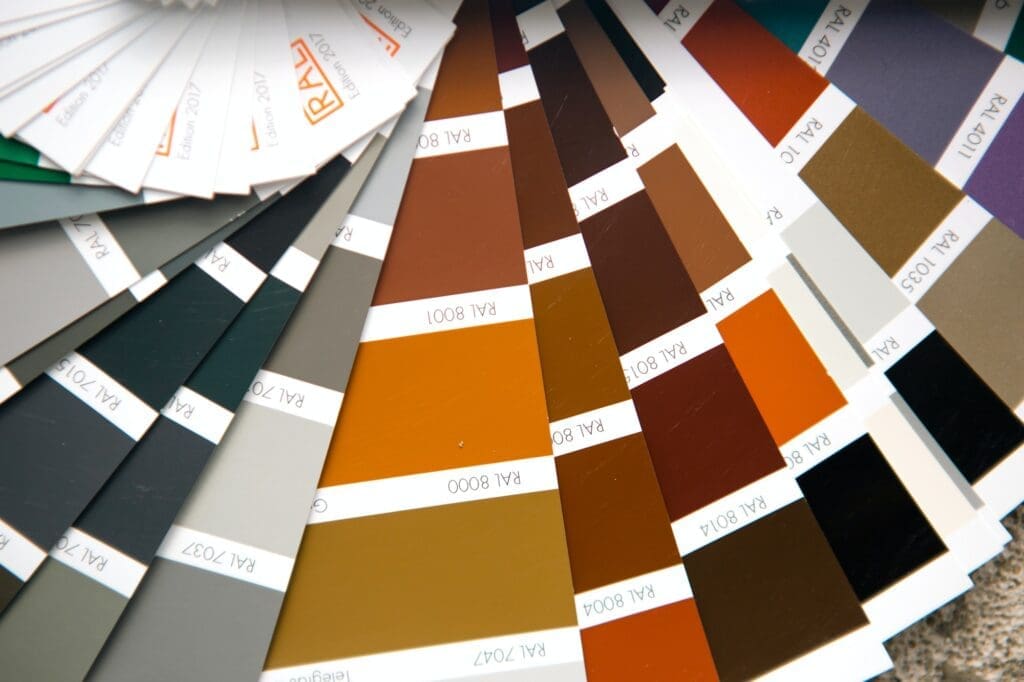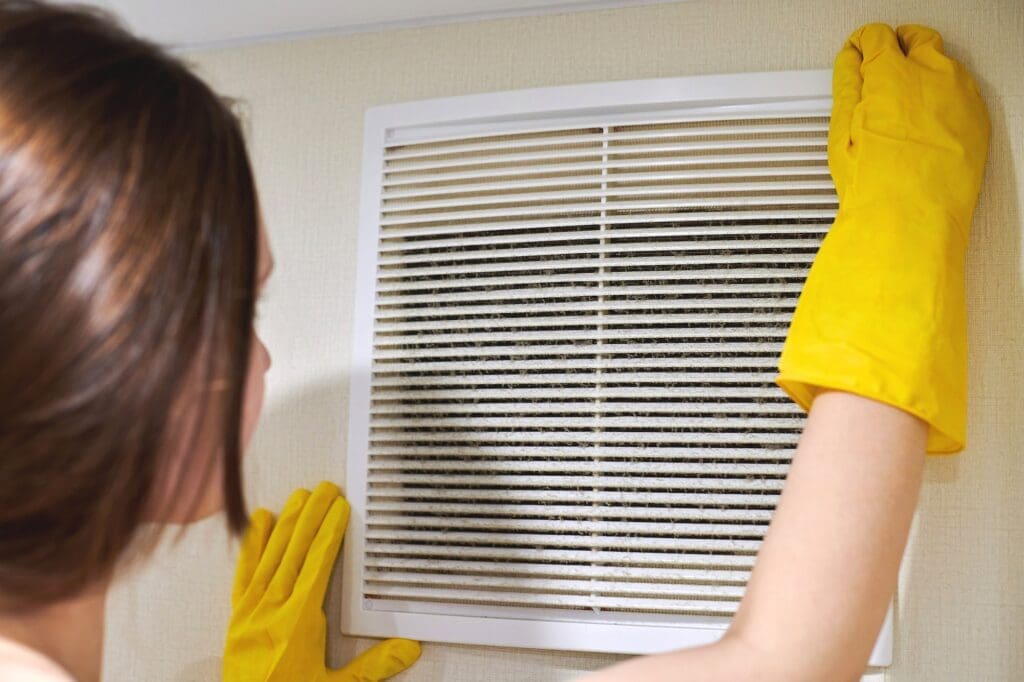The Art Of Water Damage Repair: Beautiful Designs To Incorporate In Your Home
As a water damage restoration expert, I’ve seen my fair share of homes in desperate need of repair and revitalization. It’s always disheartening to see the destruction that floods or leaks can cause; however, it also presents an opportunity for homeowners to transform their space into something truly beautiful.
Believe it or not, repairing your home after water damage doesn’t have to be all gloom and doom. In fact, with some creativity and thoughtful planning, you can turn this unfortunate event into a chance to create stunning designs that serve others by providing inspiration.
In this article, we’ll explore various ways in which you can incorporate artistic elements into your water-damaged home while maintaining its structural integrity. We’ll look at different materials and techniques that are both functional and aesthetically pleasing – because who says practicality has to be boring?
By sharing our expertise on innovative design solutions for water-damaged spaces, we hope to inspire you to step out of the box and reimagine what your home could become – turning a challenging situation into a beautiful transformation that serves as inspiration for others facing similar circumstances.
Choosing Appropriate Materials
Imagine this: you’ve just returned from a well-deserved vacation, only to find that your home has suffered significant water damage due to an unexpected leak. Your heart sinks as you survey the destruction, but fear not! As a water damage restoration expert, I’m here to guide you through choosing appropriate materials for repair while creating beautiful designs in your home.
Optimizing ventilation and considering sustainability are key elements in selecting the right materials. To begin with, proper air circulation is essential to prevent mold growth and maintain a healthy living environment after water damages have occurred. Materials such as moisture-resistant drywall or breathable insulation can greatly improve airflow without compromising on aesthetics.
Meanwhile, opting for sustainable options like reclaimed wood or recycled metal helps protect our planet’s resources while still achieving stunning design results. By striking the perfect balance between functionality and beauty, we can create spaces that serve both ourselves and others in more ways than one.
Now let’s explore how utilizing natural light can further enhance your newly restored space.
Utilizing Natural Light
As we continue our journey in transforming our water-damaged homes into beautiful living spaces, let’s talk about the importance of utilizing natural light.
Harnessing sun rays not only brightens up your space but also serves as a natural ventilation method, which can be especially beneficial after dealing with water damage. By allowing sunlight to penetrate through windows and skylights, you promote healthy air circulation while creating a warm and inviting atmosphere.
To maximize the power of natural light in your home, consider these tips:
- Window placement: Strategically place windows on opposite walls for cross-ventilation or near high ceilings to make use of rising warm air.
- Skylights: Install skylights in rooms without direct access to exterior walls; they allow daylight to flood the room from above.
- Reflective surfaces: Use mirrors and other reflective materials on walls and furniture to bounce sunlight around the room, enhancing its overall brightness.
- Window treatments: Opt for sheer curtains or blinds that diffuse sunlight rather than block it out completely; this will maintain privacy while still enjoying the benefits of natural light.
By effectively harnessing sun rays and promoting natural ventilation, your once damp and dark space will transform into a cheerful sanctuary filled with vitality.
Now that we’ve illuminated our homes with an abundance of sunshine, let’s explore how incorporating color theory can further enhance its beauty.
Incorporating Color Theory
Imagine walking into a room where the walls sing with vibrant blues, greens, and purples that dance together in perfect harmony.
Now picture those same colors swirling around you as they work to repair and enhance areas damaged by water.
As a water damage restoration expert, I can’t stress enough how important it is to incorporate color theory into our repairs.
By thoughtfully selecting harmonizing hues and complementary shades, we not only restore functionality but also create a rejuvenating sanctuary for ourselves and others.
Color plays such an integral role in setting the mood of any space – whether it’s your home or someone else’s you’re looking after.
When working on water-damaged spaces, consider choosing colors that evoke feelings of calmness and tranquility while still adding depth and dimension.
It’s essential to strike a balance between serving practical needs (like concealing repaired areas) and creating a visually pleasing environment that both you and others will enjoy being in.
With this approach in mind, let’s dive deeper into exploring textural contrasts that further elevate our designs!
Exploring Textural Contrasts
Now that we’ve explored the wonderful world of color theory, let’s dive into another fascinating aspect of water damage repair and design – mixing textures.
Just as colors can evoke emotional responses, so too can the tactile elements in your home. By combining different materials and surfaces, you can create a rich tapestry that appeals to both the eye and touch, transforming your space from a simple room to an engaging and comforting sanctuary.
Incorporating layers contrast is key when it comes to exploring textural contrasts. This technique not only adds depth but also creates visual interest within the space while still maintaining harmony with the overall design theme.
For example, try pairing a smooth marble countertop with distressed wood cabinets or adding plush throw pillows atop sleek leather furniture. Remember, our aim here isn’t just about repairing water-damaged areas; it’s about infusing beauty and love back into these spaces for others to enjoy once more.
So go ahead, get creative with those textures! Up next, we’ll discuss how creating balance through symmetry plays an essential role in achieving stunning designs post-water damage restoration.
Creating Balance Through Symmetry
Creating balance through symmetry is a powerful way to bring harmony and beauty into your home, especially after undergoing water damage repair.
As a water damage restoration expert, I’ve seen firsthand how incorporating symmetry can work wonders in transforming spaces that have been affected by unwanted moisture.
By skillfully balancing colors and arranging furniture in symmetrical patterns, you’ll be able to create an atmosphere of calmness and order which not only enhances the aesthetic appeal of your living space but also serves as a subtle reminder of our innate desire to serve others.
One effective approach when incorporating symmetry is focusing on the arrangement of furniture pieces like sofas, chairs, tables, and shelves.
For instance, placing two identical armchairs opposite each other with a coffee table between them creates a sense of equilibrium that immediately draws the eye. Similarly, consider using matching decorative elements such as wall art or throw pillows to further enhance this balanced look.
When it comes to balancing colors, opt for complementary color schemes that provide just the right amount of contrast without overwhelming the senses.
This will help make your revitalized space feel warm, inviting and ready to welcome family members or guests who may need some support during tough times.
As we continue exploring ways to transform our homes after water damage repairs, let’s venture outside and discuss how we can seamlessly incorporate outdoor elements into our interior designs.
Incorporating Outdoor Elements
As we venture into the world of water damage repair, it’s time to think outside the box and consider incorporating outdoor elements in our designs. By doing so, not only are we providing a creative solution for our homes after experiencing water damage, but also enhancing ambience through natural materials and textures that Mother Nature has so graciously given us.
Incorporating landscape features such as reclaimed wood, river rocks, or even living walls can add an unexpected touch of beauty while serving a practical purpose. When planning your new space, don’t be afraid to get inventive with these outdoor-inspired additions! Not only will they make your home feel more connected to nature, but you’ll also have the satisfaction of knowing you’ve created something entirely unique that speaks to your personal style.
And remember – by embracing this design philosophy, you’re giving back to the environment by reusing materials that might otherwise go to waste. So let’s continue on this journey together towards creating stunning spaces filled with character, warmth, and sustainability! Up next: delving into ways for reusing and upcycling existing items within our homes.
Reusing And Upcycling
As we’ve explored the beauty of incorporating outdoor elements into your home, let’s dive deeper and consider how reusing and upcycling can play a significant role in water damage repair. Not only is this approach budget-friendly, but it also allows you to serve others by minimizing waste and preserving precious resources.
Now that you are inspired to create something beautiful out of adversity, here are some fantastic ideas for reusing furniture and upcycling materials during your water damage repair process:
- Repurpose hardwood flooring: Salvage any undamaged wood planks from affected areas and use them as wall paneling or decorative accents.
- Transform damaged cabinets: Don’t throw away those old kitchen cabinets! With some creativity and elbow grease, they can become stylish storage units, bookshelves or even seating options.
- Revive upholstered items: Water-damaged upholstery may seem like a lost cause, but with professional cleaning services or DIY methods (depending on the severity), these pieces could be brought back to life.
- Upcycle building materials: Turn reclaimed bricks or stones from damaged walls into stunning pathways or garden borders in your backyard oasis.
- Create art from debris: Give new life to broken tiles, glass shards or other remnants by designing unique mosaics or artistic installations.
As you can see, there’s no limit to what you can achieve when combining resourcefulness with an eye for design. By giving new purpose to salvaged items through reusing furniture and upcycling materials, not only will your home look stunning after water damage repairs, but you’ll also contribute positively towards environmental conservation efforts.
Let us now explore yet another way of making our homes eco-conscious—implementing eco-friendly solutions in the next section.
Implementing Eco-Friendly Solutions
As a water damage restoration expert, I know firsthand the importance of not only repairing and beautifying our homes but also doing so in an eco-friendly manner. Implementing environmentally conscious solutions can help us reduce waste while increasing energy efficiency in our living spaces – something that benefits both us and future generations. With climate change becoming increasingly prominent, it’s crucial for all of us to do our part in preserving our planet.
One excellent approach to consider is incorporating reclaimed materials into your home design. Using salvaged wood, metal fixtures or repurposed furniture pieces adds character and charm while reducing waste from new production.
Another fantastic way to increase energy efficiency is by ensuring proper insulation throughout your home; this will keep you comfortable year-round while decreasing overall energy consumption.
By making these simple yet effective changes, we’re not just restoring beauty back into our homes but also contributing positively towards a healthier Earth.
Now that we’ve discussed some eco-friendly solutions let’s move on to maximizing storage space around your home!
Maximizing Storage Space
Now that we’ve explored the beautiful designs you can incorporate in your home after water damage repair, let’s talk about maximizing storage space. As a water damage restoration expert, I know firsthand how important it is to maximize efficiency while saving space for our clients. Not only does this create an organized and clutter-free environment, but it also allows them to better serve others by having easy access to their belongings.
One of my favorite ways to maximize storage is through clever built-in solutions like shelves or cabinets that blend seamlessly into the wall or under staircases. This not only adds visual interest but also provides ample storage without taking up precious floor space.
Another great tip is utilizing vertical space with tall shelving units or even repurposing ladders as unique storage options. It’s all about getting creative with the available resources!
So go ahead and try these tips out in your own home – you’ll be amazed at how much extra room you’ll gain for serving others more efficiently. And now, let’s move on and discuss the benefits of working with professional designers in achieving these goals.
Working With Professional Designers
Imagine walking into a beautifully restored home after it has suffered significant water damage. The colors are vibrant, the textures rich, and everything just seems to flow seamlessly from one room to another. This transformation is like witnessing a caterpillar morphing into a butterfly—an awe-inspiring sight that leaves you breathless.
Achieving this level of design perfection isn’t easy; it often takes collaboration between homeowners and professional designers who have experience in dealing with water-damaged properties. Working together ensures that your space not only looks amazing but also functions well for years to come.
Hiring contractors:
- Finding skilled professionals who specialize in repairing and restoring spaces affected by water damage.
- Ensuring they understand your vision and can execute it properly within budget constraints.
Budgeting costs:
- Allocating funds wisely for materials, labor, and any unexpected expenses that may arise during the renovation process.
- Prioritizing must-have features while being flexible on less important aspects to stay within budget.
Working hand-in-hand with experienced designers can significantly benefit your project as they bring an abundance of creativity and technical know-how to the table. Their expertise helps prevent costly mistakes while maximizing the potential of your space—making even challenging repairs appear seamless.
So don’t hesitate when considering hiring experts to help transform your damaged property back into a stunning sanctuary where you’ll be proud to host friends and family once again. Remember, investing in exceptional design work now will pay off tenfold down the line, both aesthetically and functionally!
Frequently Asked Questions
How Can I Prevent Future Water Damage While Incorporating Beautiful Designs In My Home?
I know what you’re thinking – how can I prevent future water damage while incorporating beautiful designs in my home? Well, let me tell you, it’s entirely possible!
As a water damage restoration expert, I’ve come across numerous waterproofing solutions and drainage systems that not only safeguard your home from potential disasters but also enhance its aesthetics.
By investing in high-quality materials for walls and floors, such as moisture-resistant paint or tiles, we can create stunning spaces without compromising on functionality. Additionally, cleverly designed gutter systems and landscaping techniques offer an extra layer of protection against water infiltration.
Ultimately, the secret lies in striking a balance between form and function – after all, there’s nothing more satisfying than knowing our homes are both visually appealing and well-equipped to withstand any challenges thrown their way!
Are There Any Specific Design Elements That Can Help To Mask Or Minimize The Appearance Of Water Damage In My Home?
Absolutely! There are specific design elements that can help to mask or minimize the appearance of water damage in your home.
As a water damage restoration expert, I’d recommend incorporating waterproofing materials and moisture-resistant finishes into your design.
For example, consider using water-resistant paint on walls and ceilings, which not only provides an extra layer of protection against potential water damage but also creates a beautiful finish.
Additionally, opt for flooring materials like ceramic tiles or luxury vinyl planks that are both stylish and capable of withstanding moisture over time.
Remember, it’s not just about hiding existing damage; it’s about taking preventative measures so you can continue serving others without worrying about future repairs disrupting your space.
How Can I Ensure That The Materials And Designs Used In My Water Damage Repair Are Both Durable And Aesthetically Pleasing?
When tackling the challenge of incorporating durable and visually appealing materials in your water damage repair project, it’s essential to strike a balance between functionality and style.
As a restoration expert, I’d recommend exploring various waterproofing solutions that can withstand moisture exposure while keeping up with current design trends.
For instance, you might consider using stylish tile designs made from non-porous materials like porcelain or ceramic for flooring and backsplashes. These options not only provide durability but also give you plenty of creative freedom when it comes to patterns and colors.
Additionally, investing in high-quality paint with built-in mold resistance is another great way to ensure longevity without compromising on appearance.
Ultimately, by carefully selecting the right products and staying informed about emerging styles, we can create beautiful spaces that serve both our practical needs and aesthetic desires – all while helping others feel at home in their newly repaired living environment!
What Are Some Creative Ways To Incorporate Water-Resistant Or Water-Repellent Materials In My Home’s Design, Without Compromising Style And Aesthetics?
Incorporating water-resistant or water-repellent materials in your home’s design can be both stylish and functional, without compromising aesthetics.
One approach we’d recommend is to explore various waterproofing techniques that utilize eco-friendly materials, ensuring durability while also contributing positively to the environment.
For example, you could opt for reclaimed wood flooring with a protective finish or use recycled glass tiles as an accent wall in areas prone to moisture exposure.
Additionally, integrating indoor plants not only adds visual interest but helps regulate humidity levels indoors – a win-win situation!
By creatively blending these practical elements into your overall design concept, you’ll achieve a harmonious balance between style and functionality while serving others by being environmentally conscious.
Can I Integrate Smart Home Technology And Water Damage Prevention Systems Into My Home’s Design Without Disrupting The Overall Aesthetic?
Absolutely, you can integrate smart home automation and water damage prevention systems into your home’s design without disrupting the overall aesthetic!
As a water damage restoration expert, I’ve seen many innovative waterproofing solutions that blend seamlessly with your existing decor. With today’s technology, there are plenty of options to choose from – like discreet leak detectors, stylish moisture-resistant materials, and even hidden drainage systems.
By incorporating these features into your home design, not only will you be protecting your investment but also creating an environment that serves others by promoting safety and preventing potential hazards.
So go ahead and explore the world of smart home automation for water damage prevention – it’ll enhance both the beauty and functionality of your living space!
Conclusion
In conclusion, the art of water damage repair is not only about restoring your home to its former glory but also about embracing innovative designs that prevent future mishaps.
As we embark on this journey together, let us draw inspiration from creative ideas and materials that combine beauty with resilience.
Together, we can transform our homes into stylish sanctuaries that are both strong against water damage and a reflection of our unique tastes.
By incorporating design elements which mask or minimize the appearance of existing damage, as well as integrating smart home technology for prevention purposes, we take control over our living spaces while ensuring they remain aesthetically pleasing.
So let’s embrace this opportunity to redefine our homes by merging durability with elegance in every aspect – from material choices to artistic expression.
With determination and creativity, we will undoubtedly achieve a harmonious balance between functionality and style, ultimately creating an environment where memories are made and cherished amidst breathtaking surroundings.



